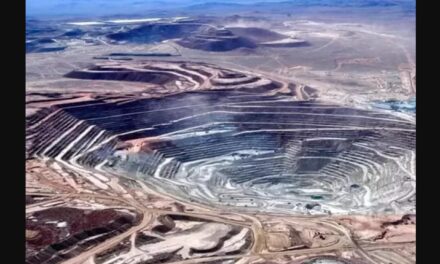Written by Alex Fox / Science Magazine
Rising global temperatures are making Greenland feel a bit more like the United Kingdom—and that’s bad news for the ice sheet that covers the massive arctic island. Rain is becoming more frequent, melting ice and setting the stage for far more melt in the future, according to a new study. Even more disturbing, researchers say, is that raindrops are pockmarking areas of the ice sheet even in the dead of winter and that as the climate warms, those areas will expand.
“This is what climate change looks like, it’s the ‘Atlantification’ of the Arctic,” says climate scientist Ruth Mottram of the Danish Meteorological Institute in Copenhagen, who was not involved in the study. “This paper identifies a really important mechanism and we need to figure out how it plays into our predictions of sea level rise.”
Each year, the hot knife of climate change excises 270 billion tons of ice from Greenland’s more than 1.7-million-square-kilometer ice sheet. Between 1992 and 2011, all that lost ice raised global sea level roughly 7.5 millimeters. Roughly half of the ice loss in that period occurred at the ice sheet’s edge in the form of icebergs cleaving from glaciers and thundering into the sea. But in recent years, satellite monitoring has revealed that 70% of Greenland’s contributions to sea level rise has come from meltwater, not ice.
Since melting on the surface of the ice sheet came to dominate in 2011, Greenland’s annual contribution to global sea level rise has doubled. Warming has driven this acceleration and, over the past 30 years or so, average air temperatures at the ice sheet warmed by as much as 1.8°C in summer, and up to 3°C in winter.
To better understand the causes of this accelerating melt, climate scientists used more than 30 years of satellite data to pinpoint “melt events” when the amount of liquid water on the ice sheet suddenly increased. To detect these events, the satellites exploited liquid water’s unique ability to absorb and emit microwave radiation from the sun. Water emits 100 times more microwave radiation than snow, allowing the satellites to detect even slight increases.
By combining the satellite data with local weather readings, the team could determine whether rain or other factors instigated melt events. The researchers identified 313 melt events caused by rain from 1979 to 2012. Over the study period, the melt caused by rainy weather doubled during summer, and tripled during winter, the team reports today in The Cryosphere.
The weather patterns sending this moisture to Greenland are not new, says lead author Marilena Oltmanns of Germany’s GEOMAR Helmholtz Centre for Ocean Research in Kiel. But because the background temperature is higher, more of this moisture is falling as rain rather than snow.
The impacts of this rain on the ice sheet extend beyond the moment drops are falling, says study co-author Marco Tedesco of Columbia University. Rain in Greenland is typically delivered by warm, moisture-laden winds from the south. These clouds linger, trapping the warm air they rode in on like a blanket, driving increased melting for days after the rain subsides.
The wintertime rain could have even more lasting consequences. Rain-induced melt in winter may quickly refreeze, but the rained-on snow forms a crusty layer that absorbs more sunlight than fresh powder. After decades of increasingly frequent winter rain, the snowpack contains so many of these layers that they accelerate melting when exposed to the sun in the summer, Tedesco says.
The surface melting caused by rain could even be accelerating the flow of glaciers, increasing the quantity of ice they deliver into the sea, Oltmanns says. If further work shows meltwater seeping beneath the glaciers does speed their march to the sea, it could lead to even more ice loss than the rain itself, she says.
Greenland holds enough ice to deliver 7 meters of sea level rise—enough to submerge much of lower Manhattan in New York City—but predicting how fast that rise occurs requires work like this, detailed the mechanisms behind the melt.
“These systems have the potential to cause big changes,” Oltmanns says. “How little we understand about them is frightening.”



